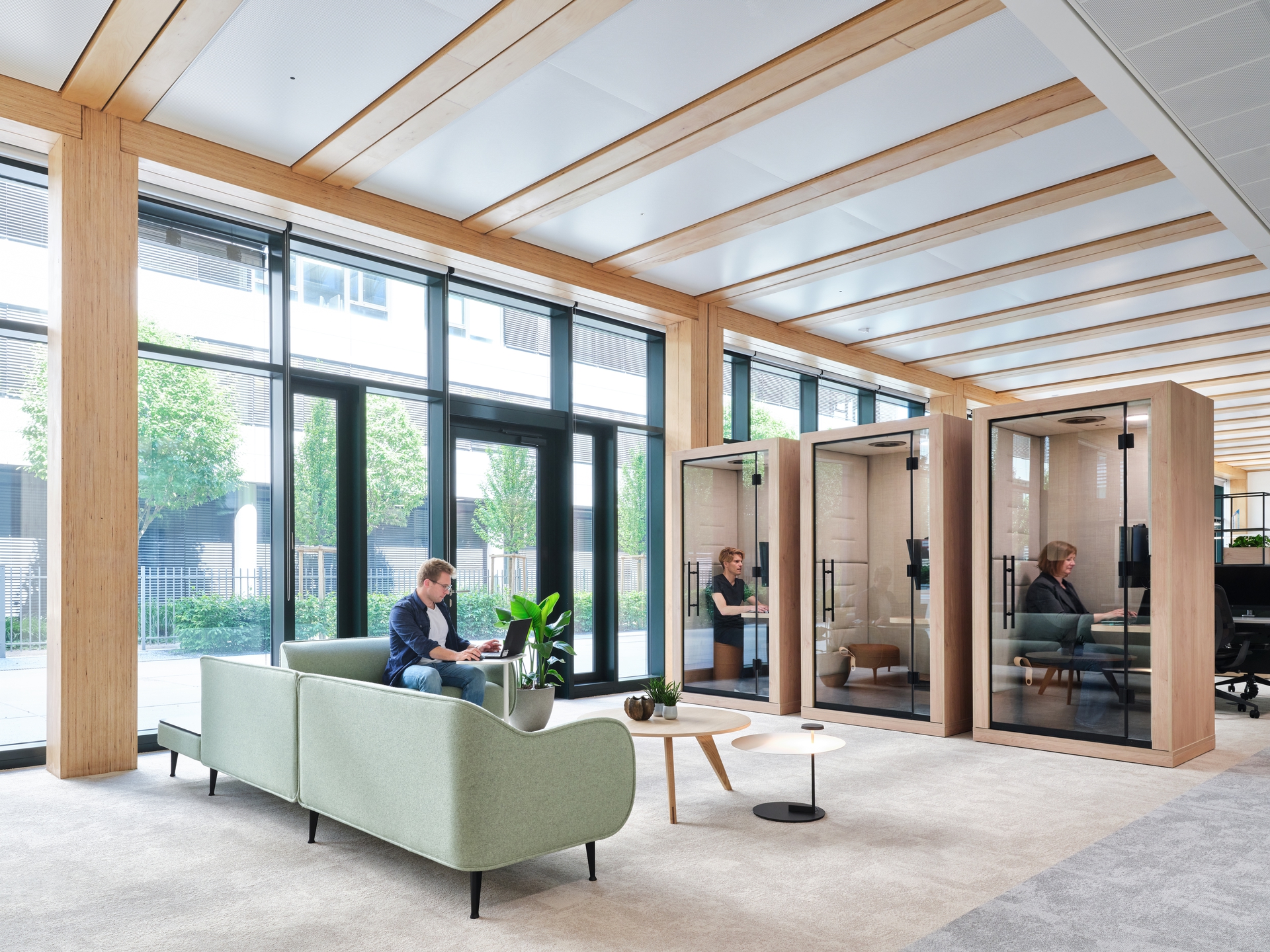
The New Rules for Tech Workplaces: Flexibility, Wellbeing, and Sustainability
The tech sector is no stranger to disruption, but this time, it's the workplace itself that's being reengineered. As digital transformation reshapes every industry, the physical spaces where innovation happens must evolve too. Hybrid work is now the default, but maintaining team culture, collaboration, and productivity across locations is proving a challenge for tech leaders worldwide.
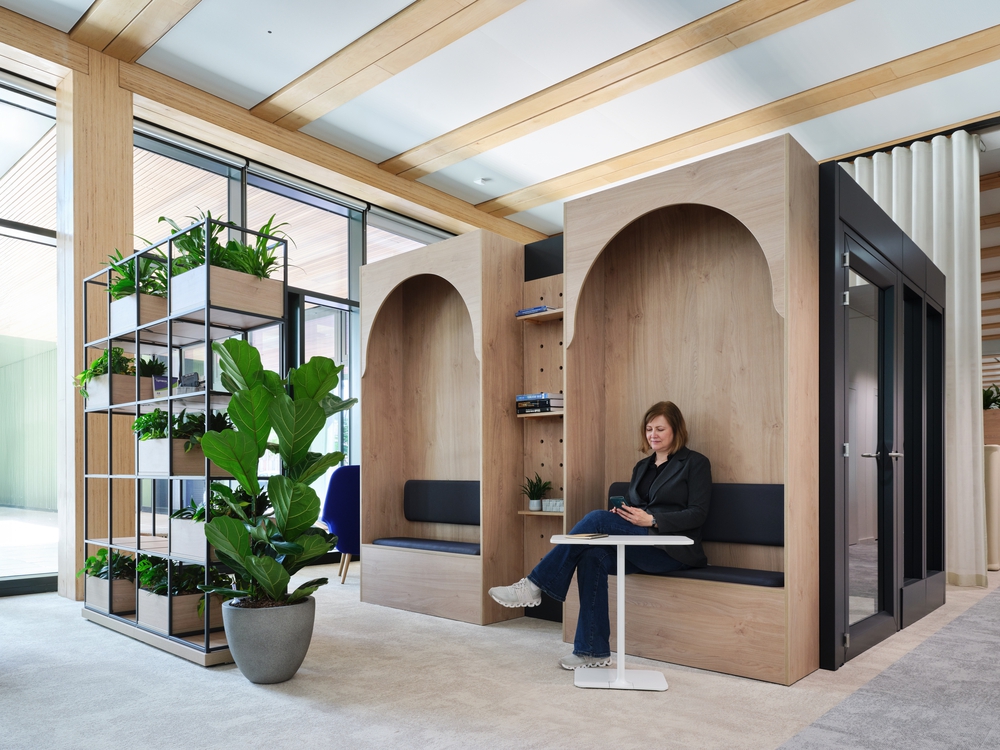
Insights from Gensler’s 2025 Global Workplace Survey show that in the technology sector, employees spend more than a third of their workweek (37%) working alone, while just 26% of their time is spent collaborating in person and 15% collaborating virtually. This split challenges tech leaders to rethink how workplaces can better support diverse modes of work and address the competing needs of flexibility, connection, and productivity.
The employee experience is central to workplace design. And for tech organisations, this shift is especially complex, balancing the speed of innovation with the need for collaboration, wellbeing, and sustainability. Tech leaders are asking themselves big questions:
The companies that will succeed are those who treat their workspaces not just as places of work, but as strategic tools for innovation, culture, and growth.
Digitisation and the Smart Office
In tech, digital tools, cloud collaboration, and flexible work arrangements have long been the norm. But with this advantage comes a need for constant evolution to stay ahead. As Gensler’s 2023 Future of Work Report highlights, offices must accommodate both virtual and in-person work, with dedicated spaces for focus, collaboration, and social interaction areas that are even more important for tech workers who are used to working remotely.
Key technologies such as high-definition video conferencing, virtual collaboration platforms like Miro and Slack, and AI-powered meeting assistants have become integral to modern office design, using specific furniture solutions such as the Portals Room to enable seamless connection between remote and in-office teams.
Additionally, IoT and AI-enabled workspaces are transforming office environments. By integrating Internet of Things (IoT) sensors and artificial intelligence, offices can now adjust lighting, temperature, and sound to suit employees’ preferences and real-time occupancy patterns, optimising comfort and productivity.
Tech companies are also leading the way in immersive technologies, such as Augmented Reality (AR) and Virtual Reality (VR), which are making their way into workplaces. Companies like Meta and Microsoft are leveraging AR and VR for collaboration, enabling teams to interact with complex datasets and prototypes in more intuitive ways.
Technology is not just reshaping products; it’s reshaping the very spaces we work in. The tech sector must lead as example of this evolution or risk credibility.
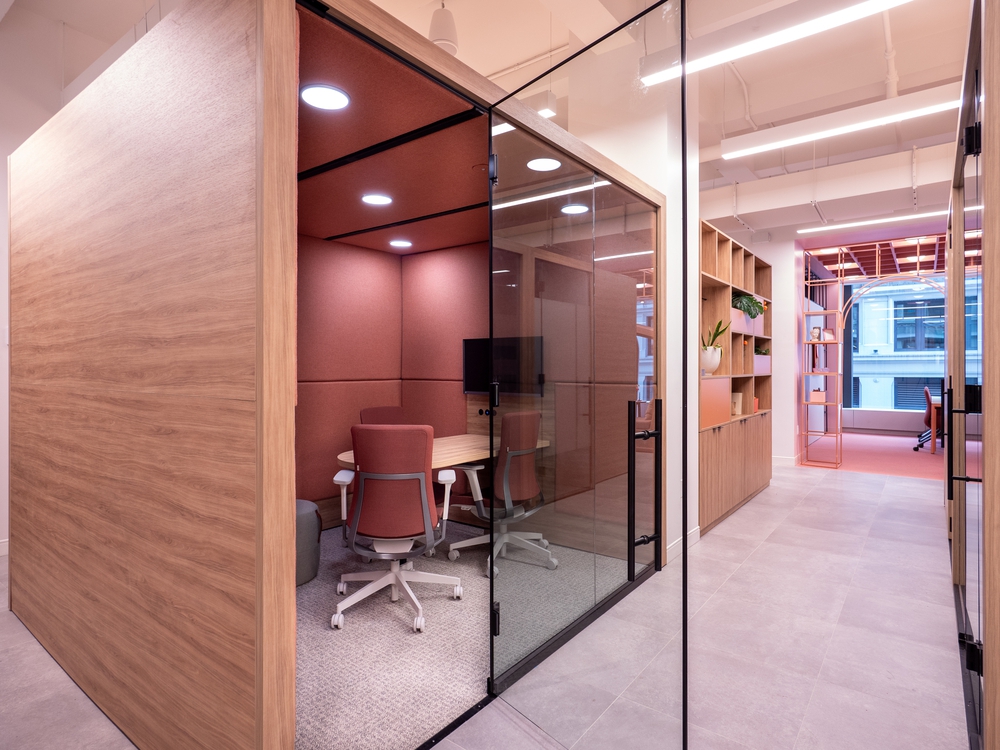
Prioritising the Human Experience
Workplace wellbeing is not just about health and safety; it’s about crafting environments where people can thrive. For the tech sector, this means designing offices with a focus on light quality, acoustic comfort, biophilia, thermal comfort, and decompression spaces.
Tech environments are often high-pressure, with long hours and high expectations. To mitigate burnout and foster sustained productivity, wellness-focused office designs are becoming essential. Creating biophilic designs — incorporating plants, natural light, and natural materials — has been proven to reduce stress and improve mental clarity.
Companies such as Google and Microsoft have transformed their workplaces and campuses into spaces that blend nature with cutting-edge technology, showing how design can be a strategic advantage. For example, Spacestor’s design for Synopsys Munich integrates biophilic elements alongside flexible collaboration zones, showing how wellness and sustainability can be embedded into tech workplaces.
Mindful of the mental strain that comes with long hours in front of screens, tech companies are increasingly adding wellness rooms and quiet spaces. These spaces offer employees the opportunity to recharge, meditate, or step away from the intensity of a tech-driven environment, helping maintain both mental health and creativity.
Wellbeing is also a powerful factor in retention. Companies that prioritise spaces designed for relaxation and mental rejuvenation are more likely to attract and retain top talent.
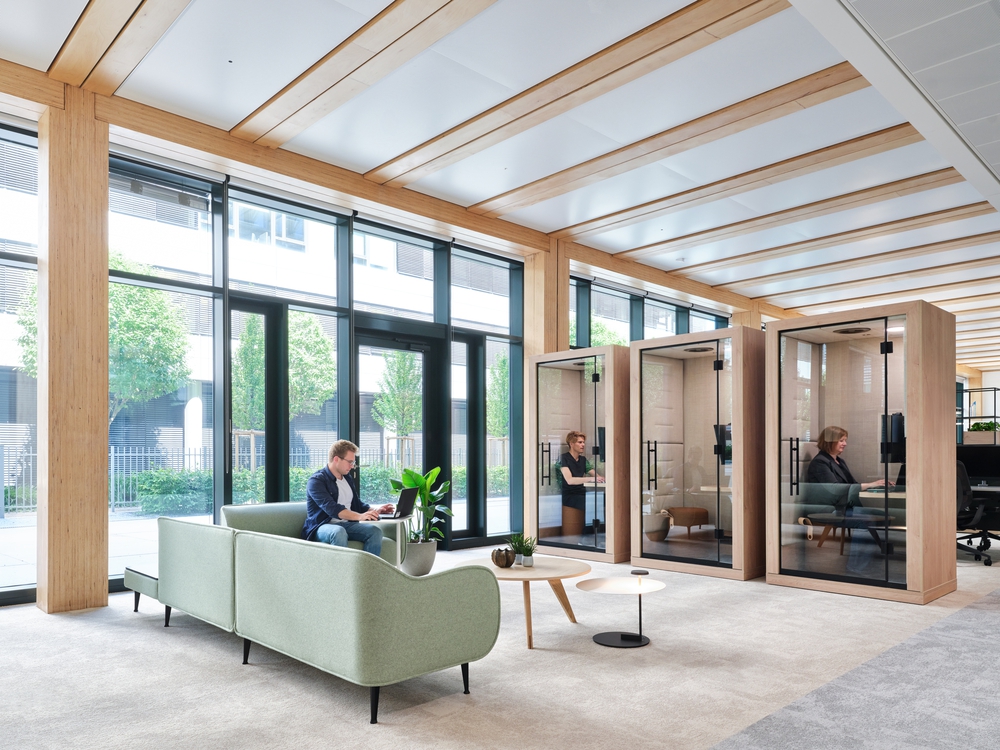
Collaborative and Social Spaces Over Traditional Desks
The traditional cubicle is on its way out. Tech companies are embracing Activity-Based Working (ABW), organising workspaces into zones for focus, collaboration, socialising, or brainstorming. This flexibility allows employees to choose environments best suited to their tasks, boosting both productivity and job satisfaction.
Tech companies are also placing emphasis on “third spaces” - informal areas such as lounges, cafés, and gaming zones that blend work and leisure. These spaces promote creativity, encourage spontaneous interactions, and foster a strong sense of community, meaning that the physical workspace becomes a destination space – a place where employees choose to be.
As Gensler’s 2025 report notes, in the technology sector, the majority (37%) of employees spend their time working alone, making the shift from traditional layouts to flexible, collaborative spaces all the more critical for innovation. Spacestor’s project with Google at Boland’s Mills in Dublin is a strong example of this shift, creating a light-filled workplace that combines flexible ABW zones with vibrant third spaces, balancing areas for individual focus with settings designed to bring people together.
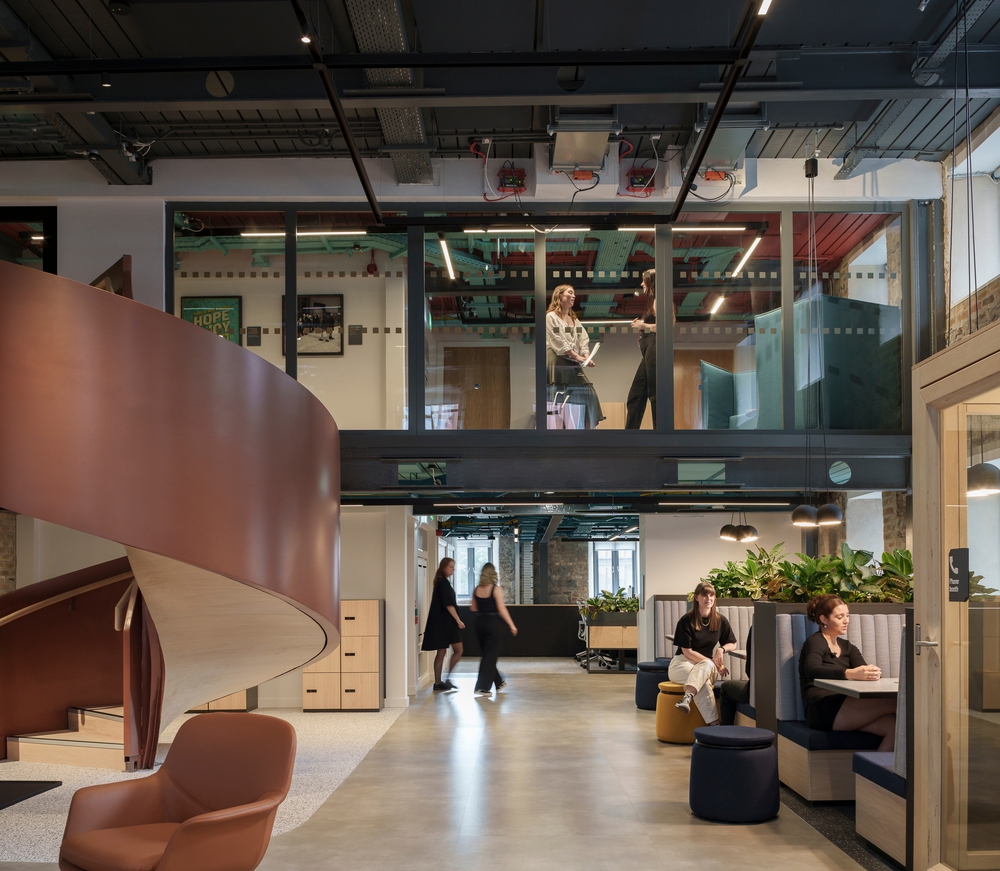
Flexibility: The Future of Work
Flexibility is critical in the tech sector, where digital tools and cloud collaboration have long supported remote and hybrid work. This adaptability has positioned tech companies well for the post-pandemic shift to hybrid models.
Innovation in tech often happens in small, agile teams, and office designs need to support this by enabling both physical and virtual collaboration. As companies expand global talent pools, offices must accommodate both remote and in-office employees.
As Gensler’s 2025 Global Workplace Survey shows, the majority of time in the technology sector (37%) is spent working alone, while only 26% is spent in in-person collaboration. This split underscores why tech companies need purpose-designed spaces that support a variety of work modes; quiet zones for deep-focus work, dynamic hubs for collaboration, and social spaces to build connection. This inclusivity and dedication to flexibility for a multi-generational workforce was front of mind during Spacestor’s project with Adobe London, where flexible layouts and wellness spaces create an environment that supports a diverse workforce.

Sustainability and Environmental Impact
Sustainability has become an integral part of the tech sector’s ethos. Companies like Google and Apple are setting the standard with commitments to carbon-neutral campuses, extending these principles to office environments.
Sustainable materials and energy-efficient designs are now a key focus in tech offices. This extends beyond buildings to include data centres, which require vast amounts of energy. Reducing their environmental footprint is essential to broader sustainability goals.
Emerging trends include decentralising offices to reduce commuting times and environmental impact. Companies like GitLab embrace fully remote models, while others adopt regional offices to reduce travel.
For the tech sector, the new rules centre on flexibility, wellbeing, sustainability, and inclusivity, ensuring that spaces support hybrid teams, attract talent, and foster culture.
Spacestor’s projects with tech giants like Synopsys, Google and Adobe show how the workplaces of the future are committing to improved design principles and how thoughtful design can merge digital tools with human needs, creating environments where people want to be. Tech companies that embrace these shifts will not only future-proof their workplaces but also lead the way in shaping how and where innovation happens.
Curious about how you could implement these trends in your office? You can get in touch with us here for a no talk about the latest workspace trends, solutions and your workspace needs.


